Political Blogs
What 'Essential' Means to Obama
April 18th 2011 by News
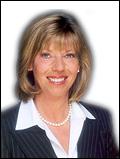
Last week, Americans watched a negotiation over $38.5 billion in spending cuts play out under the looming shadow of a federal government shutdown. This week, the House of Representatives has moved the discussion from billions to trillions with consideration of the federal budget for Fiscal Year 2012. Still, last week offered Americans an interesting insight into its priorities.
Should the federal government ever shut down, and it has several times in the past, federal employees are basically divided into two groups: those deemed essential and those who are not permitted to work if the government should shut down. Those “essential” government employees must satisfy one of three tests: they must be essential to protecting life and the public safety; they must be essential to protecting property; or they must be essential to discharging constitutional duties. In the executive branch, the President makes the determination as to who is essential and who is not.
For instance, the issuance of Social Security checks is important to protecting senior citizens who rely on their benefits to meet basic needs, so federal employees would be retained to make sure benefits would be paid. Likewise, FBI agents and members of our military are essential to protecting lives, so they would stay on the job. Finally, the President’s powers in foreign diplomacy are expressly laid out by the Constitution, so vital functions of the U.S. State Department would continue. But as each federal agency posted its contingency plan to maintain essential functions during a possible federal government shutdown, the plan at the U.S. Department of Health and Human Services raised a few eyebrows, including mine. Their plan said: “Operations of the Center for Consumer Information and Insurance Oversight could continue as funding was provided through the Affordable Care Act. This includes insurance rate reviews, assessment of a portion of insurance premiums that are used on medical services, establishment of exchanges, operation of the pre-existing condition insurance program and the early retiree reinsurance program.”
In effect, though the operation of the federal government had reached an impasse requiring more than 80 percent of federal employees to be sent home without pay, Obamacare would continue uninterrupted as scheduled. Many of the functions of this particular new office aren’t even relevant until 2014 – three years from now. Surely they, too, could have been spared for a few days while the budget for 2011 was sorted out.
Whenever we establish bureaucracies that end up being greater than the government of which they are meant to be a part, Americans should be extremely concerned about their abilities to control those functions of government. The Obama health care law functions as though it is “essential.” The Center for Consumer Information and Insurance Oversight continues on unaffected by the plight of taxpayers or the debt faced by our grandchildren. This single brand-spanking-new entity at the U.S. Department of Health and Human Services even has its own $1 billion budget so it can weather the storm of any fiscal struggles the rest of the nation may face.
Tone-deaf bureaucracy, heavy-handed regulation, and this new form of indestructible, “essential” government are the clearest signs yet that we must set right the principles of accountability and austerity in Washington, DC.
Jo Ann Emerson, R-Cape Girardeau, represents the Eighth Congressional District of Missouri in the United States House of Representatives.
Last Updated on April 18th 2011 by News
https://showmetimes.com/Blogpost/uifs/What-Essential-Means-to-Obama
Operation Shakeup
April 11th 2011 by News
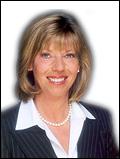
Those disasters caused the Mississippi River to run in reverse for three days and the shock waves rang church bells as far away as Boston. In those days, there was damage, but the effects of a 7.0 magnitude earthquake today would be gravely different.
Much of the major transportation infrastructure in our region runs through the New Madrid Seismic Zone: highways, bridges, railways and rivers which carry billion of dollars in commerce from east to west, north to south in our state and nation.
Our national energy infrastructure is similarly situated, with pipelines carrying oil and natural gas through our region to destinations all over the country.
A major earthquake would cripple our national economy and sever the supply of domestic energy resources from their respective markets.
In the end, we were able to convince federal authorities that the potential for this kind of a disaster merited more attention. Especially after Hurricane Katrina, we are obligated to do everything in our power to understand the possible challenges of a humanitarian disaster and, even more importantly, to put the right plan in place to respond should the worst case come to pass.
The Great Central U.S. Shakeout is set for April 28th. It is an earthquake drill of the largest proportion, involving federal, state and local authorities in a tabletop disaster-and-response situation. Our key communications channels will be tested, and so will our ability to get help wherever it may be most needed as quickly as possible – even if roads are impassable, buildings unstable, and the ability to help far exceeded by the need for help.
Some parts of the Eighth Congressional District will surely be affected directly should a major earthquake occur in the New Madrid Seismic Zone today. Other counties would be called upon to help by providing relief supplies, taking in people displaced by a natural disaster, and lending law enforcement and emergency personnel to a massive response effort.
For families, this is a time to review emergency procedures in the home and to make sure a kit is on hand with essential supplies: water, canned food, a battery-powered radio, a flashlight, and whatever else might be necessary to shelter-in-place.
To date, more than 360,000 individuals have signed up online to take part in the Shakeout on April 28th. If you would like to be a part of the day’s exercise and have not yet registered, go online to visit www.shakeout.gov and learn more about how to protect yourself and your family during an earthquake.
The website, sponsored by the Central U.S. Earthquake Consortium in conjunction with FEMA, the American Red Cross, the U.S. Geological Survey and others, offers a wide range of materials for families, businesses, non-profit organizations, local governments and educational institutions. I’ve reviewed it, and so should you. After all – this drill is something we’ve asked for, and something we may someday be very glad we did.
Jo Ann Emerson, R-Cape Girardeau, represents the Eighth Congressional District of Missouri in the United States House of Representatives.
Last Updated on April 11th 2011 by News
https://showmetimes.com/Blogpost/uieb/Operation-Shakeup
The Right Medicine
April 01st 2011 by News
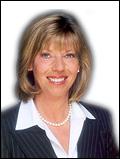
A new report has the medical community wondering why Americans and people in other developed nations around the world aren’t taking their medicine. Missed doses, incomplete regimens and unfilled prescriptions cost the American health care system billions of dollars each year and, what’s worse, allow serious diseases to progress without the proper course of treatment.
According to the study, commissioned by the National Community Pharmacists Association (a group with dozens of members in our Southern Missouri towns and cities), a wide variety of reasons is cited for a patient not taking their prescribed medication. Nearly half of the patients responding to the survey said they forgot to take a prescribed medication, 31 percent did not fill a prescription, a quarter took less than the recommended dosage, and eight percent said they didn’t understand the instructions on how to take a medication. With varying degrees of seriousness, all of these statistics represent causes for concern. The consequences can be severe, as skipping pills, cutting them in half, not finishing or not refilling prescriptions can lead to poorer health outcomes. Medical treatments take longer to complete. Diseases linger rather than fall into remission. Conditions worsen and the risk of complications can rise. And stress accumulates as patients worry about their continuing symptoms, their inability to afford their medications, or whether they have the right information about dosages. All of these difficulties for patients end up costing them in the long run, along with health care providers, taxpayers, and everyone else who depends on access to our health care system. .
Fortunately, we have a partner in the effort to ensure U.S. patients receive medicines in their proper doses. The pharmacists working every day in our rural communities engage in a partnership with their patients. They are a reliable source of information about the medicines they dispense. They can tell patients whether a generic is available to them, how to get the most out of their Medicare Part D or private prescription drug coverage, and most of all the importance of taking the complete course of medicine prescribed by a doctor. .
In addition, systems are being developed which can indicate to a doctor or a pharmacist whether a patient is refilling prescriptions as they should. It’s a new way to use technology to have a secure, private conversation between patients and their providers. With the right information, the pharmacist or the doctor can talk to patients about whether the cost of medication is affecting their ability to refill prescriptions, if the course of treatment is causing unpleasant side effects that can be overcome with a change in dosage, or if it’s as simple a matter as the patient forgetting to refill the prescription. When systems like this have been put into practice on a trial basis, the results are astounding. One pharmacy care program at Walter Reed Army Medical Center measured the affect of the program on a group of patients age 65 and older who were taking at least four medications. They found the percentage of patients who adhered to their regimens went from 61 percent to 97 percent in six months. For those who discontinued the pharmacy care program, the rate dropped back down. .
To me, these kinds of examples serve as a reminder that it is extremely important to recognize pharmacists as major partners in our medical care. Many of us see the doctor a couple of times a year, but we see our pharmacist once a month – when we have a question about over-the-counter cold medicines for our kids, when we need to know if the medicines we are taking are compatible or side effects are unusual, and when we fill and refill our prescriptions. Taking the time to get our prescriptions correct is a responsibility we all bear to be healthier in the long run, and our pharmacists should have every tool they need to help us out. .
Jo Ann Emerson, R-Cape Girardeau, represents the Eighth Congressional District of Missouri in the United States House of Representatives.
Last Updated on April 01st 2011 by News
https://showmetimes.com/Blogpost/uice/The-Right-Medicine
March is Red Cross Month
March 25th 2011 by News
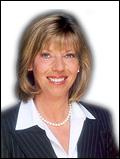
By JO ANN EMERSON
March has been celebrated as Red Cross Month in the United States since 1943, and the role of this humanitarian organization in our communities continues to grow.
Most of us hear about the Red Cross when disaster strikes. In the darkest hours of our communities, the American Red Cross is a swift source of relief. The organization provides food, water, shelter and aid in the wake of tornadoes, hurricanes, floods, earthquakes and any other disaster that can befall us. Yet the mission of the American Red Cross is broader than just emergency relief. Red Cross volunteers also support the armed services, our veterans and their families. They teach lifesaving skills, like CPR, to people we hope will never have to use them. The Red Cross is an important partner in international disease prevention efforts. And, of course, the collection, testing and supply of blood donations across our country is a mainstay of the Red Cross mission.
For 130 years, the Red Cross has been one of the leading humanitarian organizations in our nation and around the world. It is a true partnership: our communities depend upon the Red Cross in their hour of greatest need, and the Red Cross depends upon the support of the public to be always ready to serve in a crisis.
Even in Southern Missouri, we have seen the quick response of the Red Cross in the wake of severe weather, and we would surely rely on their rapid response with essential supplies if a major earthquake should strike the communities within the New Madrid Seismic Zone. Without a doubt, the Red Cross will be on the scene in any American community where people need their assistance. The organization has over one million volunteers and more than 650 chapters in the U.S. Every year, the Red Cross responds to some 67,000 disasters where relief operations are needed.
So March is set aside as a time to recognize the unique work of the Red Cross whether or not there is a disaster in the news. As with any kind of preparedness, the hard work is accomplished before catastrophe strikes. The stockpiling of supplies, the readiness of volunteers, the plan – ready to implement at a moment’s notice – are all constructed well in advance of the time when they are needed.
In Southern Missouri, countless community volunteers work to make this level of organization possible. Nationally, Americans combine to support the Red Cross with their time and talent for relief efforts around the world in addition to their daily work in training, emergency preparedness and prevention. Abroad, the Red Cross is an international symbol for the humanitarian efforts of an organization which boasts tremendous support from the American people.
For this important work to continue to benefit our region and our nation, we must recognize their efforts rain or shine, so to speak. And let’s all hope for sunny days ahead.
Jo Ann Emerson, R-Cape Girardeau, represents the Eighth Congressional District of Missouri in the United States House of Representatives
Last Updated on March 25th 2011 by News
https://showmetimes.com/Blogpost/uiav/March-is-Red-Cross-Month
In Defense of Rural America
March 11th 2011 by News
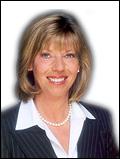
As I work to represent our rural congressional district in the U.S. House of Representatives, I encounter policy issues from time to time that I find my colleagues from urban areas are less familiar with than I. For instance, a couple of years ago, I found myself explaining the silliness of federal regulations that penalized American farmers for the “greenhouse gas effect” of placing an acre of U.S. farmland in conservation status by charging them for an imaginary acre of deforestation in the Brazilian rainforest. Some of my colleagues from urban areas just didn’t grasp the issue and others didn’t care because the rule didn’t directly affect the cities they represent. That’s just one example of many.
I try my best to educate my colleagues on the importance of, say, sound energy policy for rural America, where our economy simply uses more energy for agriculture, transportation and manufacturing than the economy in places such as San Francisco or New York City. And I usually find that there is quite a lot that people from urban areas don’t understand about rural issues, and some representatives from those places have never been to a real working farm or visited a county with fewer than 8,000 people living in it.
I have long wondered about the origins of those misconceptions. Usually, it is just a straightforward lack of familiarity with rural communities or rural economies or rural health care. That’s understandable, and many of my colleagues in Congress really try hard to expand their understanding.
But there is also a prejudice against rural America in the media, I have found, that perpetuate myths about places like Southern Missouri. A blogger for The Washington Post, Ezra Klein, gave yet another voice to that prejudice last week in a post he titled: “Why we still need cities,” (as though our cities are going anywhere).
Mr. Klein writes about the book he is reviewing: “…cities make us smarter, more productive and more innovative. To put it plainly, they make us richer. And the evidence in favor of this point is very, very strong.” And later, to make sure no one misses his point about how he thinks the safety net for American agriculture is a waste of money, Mr. Klein says in a dialog with Ag Secretary Tom Vilsack: “My understanding of why I pay 6 or 7 percent of my paycheck for food and people in other countries pay more is that I’m richer than people in other countries, my paycheck is bigger.”
There’s more, but the salient points are these: that Mr. Klein has no clue about the innovations in energy, science and agriculture which take place in rural areas and at research universities in rural states. He doesn’t understand our entrepreneurialism, and he has no grasp of the economic importance of the fact that rural America is the only part of our country in which we run a trade surplus.
Most striking is the fact that Mr. Klein has no idea how rich life is in rural America. He doesn’t understand the relationships between our families and our small communities, where every person counts and everyone contributes. The traditions of small towns may not be much different from the traditions in big cities: our Fourth of July parades, our church picnics, and our active community organizations. Cities have these things, too. But there is a great difference in the fact that we know our neighbors’ names, we know how their kids are doing, and we step in to help them out when a member of their family suffers an illness or gets deployed far from home in the military.
There is a lot to love about rural America, a lot to fight for, and a lot that some folks in cities just don’t know they are missing.
Jo Ann Emerson, R-Cape Girardeau, represents the Eighth Congressional District of Missouri in the United States House of Representatives
Last Updated on March 11th 2011 by News
https://showmetimes.com/Blogpost/ui86/In-Defense-of-Rural-America

